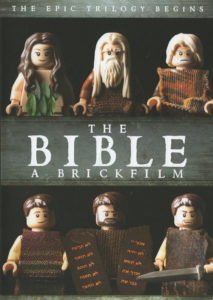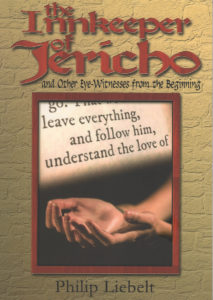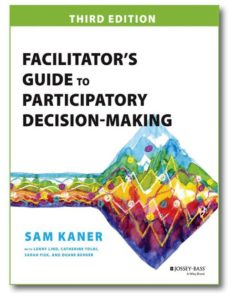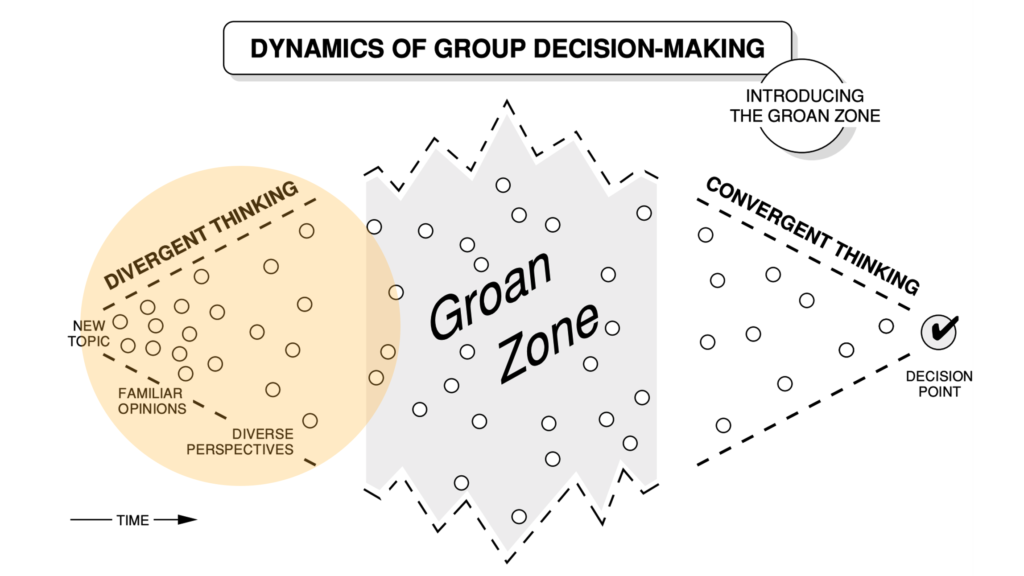I’ve launched a new website at craigmitchell.com.au
While this site will stay active, new posts will be on the new site, and I’ll also be migrating some material to the new one. Please come and visit!
Helping churches form lifelong disciples of Jesus Christ
I’ve launched a new website at craigmitchell.com.au
While this site will stay active, new posts will be on the new site, and I’ll also be migrating some material to the new one. Please come and visit!
 Epic indeed! Here’s the first instalment of a planned trilogy of movies telling the biblical narrative with Lego characters. The series was filmed in Uganda, which is interesting as Adam and Eve have pale skin and American accents! The Bible: A Brickfilm is from Bricktime Studios.
Epic indeed! Here’s the first instalment of a planned trilogy of movies telling the biblical narrative with Lego characters. The series was filmed in Uganda, which is interesting as Adam and Eve have pale skin and American accents! The Bible: A Brickfilm is from Bricktime Studios.
Apparently, the videos are created by one guy – “Josh Carroll is 17 year old junior in Highschool. He is passionate about reaching the world for Christ, and currently lives in Uganda, Africa as a missionary kid. Josh has been making Bible movies, documentaries, and other Christian productions for over 7 years. His plan is to become a professional director.” (from the Brickfilm website)
So…. the film production is very good in terms of camera work, lighting, editing and audio. The range and customisation of Lego are fabulous, with great facial expressions and costumes. Characters move, even in slow motion. Heads roll. The sets are amazing in their detail. Altars burst into flame. Noah’s ark gets seriously wet. Mammoths bleed. Clearly a lot of time was spent in the production.
The script is presumably written by Josh and family/friends. It’s a modern, colloquial take on the narratives. Adam to Eve “Woah, you are beautiful!” OK, it’s not any kind of Bible translation, but rather gospel storytelling for children. Adam names the dinosaurs (they’re even on the Ark!) The temptation of Eve and the subsequent fall is almost a mini-movie in itself. So you can tell from early on that sin is going to feature a lot in the Old Testament! (A lot, get it…)Continue Reading
Today I was delighted to come across the online work of Victoria Emily Jones through her former blog, The Jesus Question. I was looking for online links to articles about cultural representations of Jesus for a study that I’m writing, and found her blogs about nativities from around the world here and here. As something of a collector of religious art books, I was of course immediately interested.
Victoria has a new blog called Art and Theology, in which I found a link to this online Stations of the Cross with audio and image, curated by Victoria with the Smithsonian Institute. Fantastic work, Victoria. It is also a great idea – to create an online experience by adding to existing works, which need not even be in the same physical space.
Anyway, I’m already enjoying Victoria’s blog – she writes eloquently and thoughtfully about art.
This then led me to an other project in which she is involved – ArtWay. This site features posts by a whole range of people on various aspects of art and religion. I’m very excited to have uncovered this stuff.
 My copy of The Innkeeper of Jericho arrived in the mail today. It’s a book of a dozen imagined first-person narratives from the Gospels by Rev Philip Liebelt, Uniting Church Minister. The stories are written for story-telling, and combine biblical scholarship with story-telling expertise.
My copy of The Innkeeper of Jericho arrived in the mail today. It’s a book of a dozen imagined first-person narratives from the Gospels by Rev Philip Liebelt, Uniting Church Minister. The stories are written for story-telling, and combine biblical scholarship with story-telling expertise.
Phillip has been part of the Network of Biblical Storytellers (yes, NOBS) for about three decades, and has honed his craft and taught it to ministers, lay preachers and those who read the Bible in church. I’ve been in the congregation once for one of Philip’s epic tellings of a large portion of Luke’s Gospel.
and a cast of other familiar characters, and less characters from well-know stories. Then there are some more imaginative perspectives.
As a preacher, I use narrative a lot, both to bring the biblical text alive, and within narrative approaches to preaching, so a book like this is a great gift! As a story-teller, Philip understands phrasing and pace, active verbs, perspective, and drama. The stories beg for dramatic telling.
The stories are also long. They could be a sermon in themselves, or part of a retreat. However, they are an invitation to worship leaders and preachers to allow more time and space for the biblical narrative in worship – more than just a brief, almost token (and often barely articulate) rendering before the real business of the sermon. When using them, I will probably edit them for length depending on the occasion.
The book is $15 plus postage. It is a great resource that I’m happy to recommend. You can order it from philipliebelt@gmail.com
You can find Philip on Youtube here.
 I’ve just come across the work of Dr Sam Kaner from Community at Work on facilitation and group decision-making. Sam is a clinical psychologist whose work focus has been in organisational decision-making. His book Facilitator’s Guide to Participatory Decision-Making is a global top-seller. The table of contents is here. Frankly, it has the most boring graphic design in the world, but already in the first section I’ve found some very helpful stuff for a current project. The book itself is pretty much Facilitation 101, which means that it is full of the bleeding obvious as far as I’m concerned. However in terms of teaching a range of techniques to wannabee facilitators, it certainly covers a lots of territory. It is very systematic, so for me it will be useful in thinking more thoroughly about facilitation approaches, and in teaching facilitation to others.
I’ve just come across the work of Dr Sam Kaner from Community at Work on facilitation and group decision-making. Sam is a clinical psychologist whose work focus has been in organisational decision-making. His book Facilitator’s Guide to Participatory Decision-Making is a global top-seller. The table of contents is here. Frankly, it has the most boring graphic design in the world, but already in the first section I’ve found some very helpful stuff for a current project. The book itself is pretty much Facilitation 101, which means that it is full of the bleeding obvious as far as I’m concerned. However in terms of teaching a range of techniques to wannabee facilitators, it certainly covers a lots of territory. It is very systematic, so for me it will be useful in thinking more thoroughly about facilitation approaches, and in teaching facilitation to others.
So this is the bit that got me interested – thinking about how groups move from brainstorming to a shared result and why they get stuck in the middle. You’ll have to get the book to find out more about this. Suffice to say that there are a number of process issues in the middle of going from familiar options to new possibilities to group consensus around a preferred way to proceed.
Kane has worked on a bunch of books and there’s a great set of free downloads here.
Kane is part of the Collaborative Leaders Network. This is super-interesting as they provide a range of frameworks for approaching different kinds of group decision-making, from community transformation to collaboration incubators to a “collaboration strategy grounded in Polynesian values”. Here is an overview. There are free downloads explaining each approach.
Here’s a taste of Sam Kaner from Youtube.